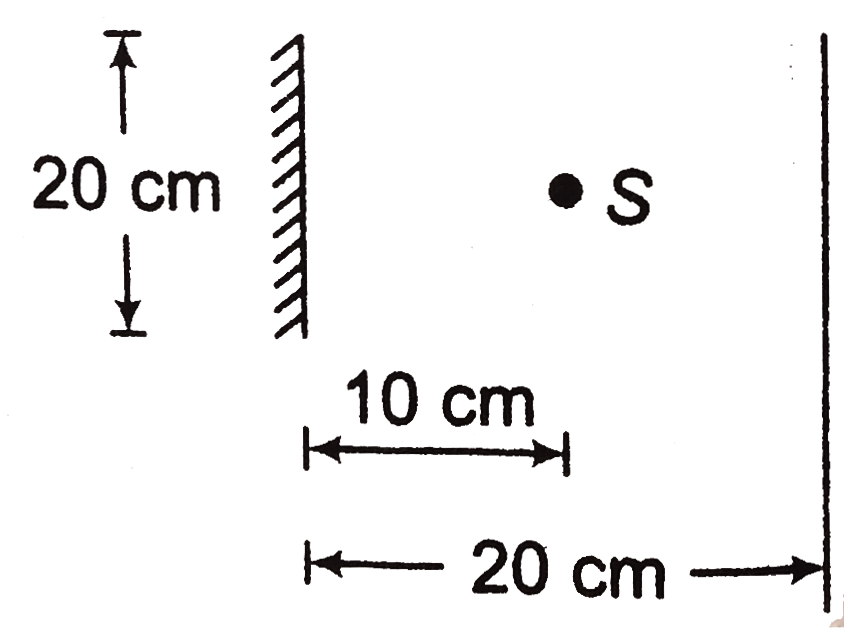Assertion A diverging lens (in air) cannot be made more diverging whatever be the medium we choose completely immerse the lens.
Reason The minimum refractive index of any medium is 1.
53
54
1615
32
The correct Answer is:A
(a) ∵ Refractive index of water with respect to air, anw=43
and Refarctive index of glass with respect to water, ang=anw×wng=43×108=53
Topper's Solved these Questions
- RAY OPTICSBOOK - DC PANDEY ENGLISHCHAPTER - RAY OPTICSEXERCISE - medical entrance special format question
22 Videos
- RAY OPTICSBOOK - DC PANDEY ENGLISHCHAPTER - RAY OPTICSEXERCISE - Medical entrance gallary
73 Videos
- RAY OPTICSBOOK - DC PANDEY ENGLISHCHAPTER - RAY OPTICSEXERCISE - Checkpoint 9.7
10 Videos
- NUCLEIBOOK - DC PANDEY ENGLISHCHAPTER - NUCLEIEXERCISE - C MADICAL ENTRANCES GALLERY
46 Videos
- REFLECTION OF LIGHTBOOK - DC PANDEY ENGLISHCHAPTER - REFLECTION OF LIGHTEXERCISE - Subjective
9 Videos
Similar Questions
Assertion The formula connecting u, v and f for a spherical mirror is valid only for mirrors sizes which are very small compared to their radii of curvature.
Reason Laws of reflection are stricity valid for plane surface, but not for large spherical.
View SolutionTwo identical glass (μg=3/2) equi- convex lenses of focal length f each are kept in contact. The space between the two lenses is also filled with water (μg=4/3). The focal length of the combination is
View SolutionFor the myopia defect in eye, it can be removed by
View SolutionThe half-life of a radioactive substance is 30 minutes, The time (in minutes) taken between 40% decay and 85% decay of the same radioactive substance is.
View SolutionA point source of light S is placed at a distance 10 cm in front of the centre of a mirror of width 20 cm suspended vertically on a wall. An insect walks with a speed 10cm/s in front of the mirror along a line parallel to the mirror at a distance 20 cm from it as shown in figure. find the maximum time during which the insect can see the image of the source S in the mirror.

View SolutionA diverging lens is made of material with refractive index 1.3 and has identical concaves surfaces of radius 20 cm. The lens is immersed in a transparent medium with refractive index 1.8. (a) What is now the focal length of the lens? (b) What is the minimum distance taht an immersed object must be from the lens so that a real image is formed?
View SolutionDoes the focal length of a lens depend on the medium in which the lens is immersed? Is it possible for a lens to act as a conversing lens in one medium and a diverging lens in another medium?
View SolutionAssertion A diverging lens (in air) cannot be made more diverging whatever be the medium we choose completely immerse the lens.
Reason The minimum refractive index of any medium is 1.
View SolutionA biconcave lens made of transparent material of refractive index 1.25 is immersed in water of refractive index 1.33. Will the lens behave as a convering or diverging lens? Given reason.
View SolutionA biconcave lens made of a transparent material of refractive index 1.25 is immersed in water of refractive index 1.33. Will the lens behave as a converging or a diverging lens? Give reason.
View SolutionA biconcave lens made of a transparent material of refractive index 1.5 is immersed in water of refractive index 1.33. Will the lens behave as a converging or a diverging lens? Give reason.
View Solutionएक दिउत्तल लेंस को जो 1.25 अपवर्तनांक वाले माध्यम से बना है। 1.33 अपवर्तनांक वाले जल में डुबाया जाता है। लेंस अभिसारी लेंस की तरह कार्य करेगा या अपसारी लेंस की तरह ।
View Solution1.5 अपवर्तनांक वाल पारदर्शी माध्यम से बना दिउत्तल लेंस 1.33 अपवर्तनांक वाले जल में डुबाया जाता है। लेंस अभिसारी लेंस की तरह कार्य करेगा या अपसारी लेंस की तरह ।
View SolutionA thin convex lens made of material with refractive index 1.23 is placed in a medium with refractive index 1.56. What will be the nature of the lens now, converging or diverging ?
View SolutionA lens behaves as a converging lens in air and as a diverging lens in water. If refractive index of water is 1.33 , the refractive index of the material of the lens will be
View SolutionA biconcave lens made of a transparent material of refractive index 1.25 is immersed in water of refractive index 1.33. Will the lens behave as a converging or a diverging lens ? Give reason.
View Solution

